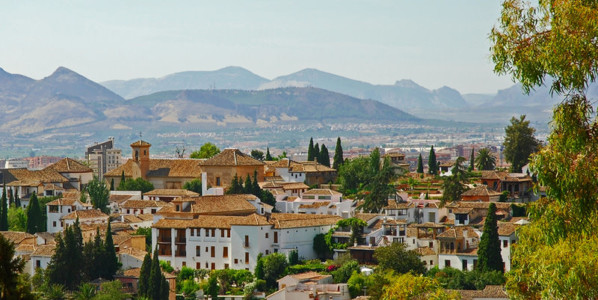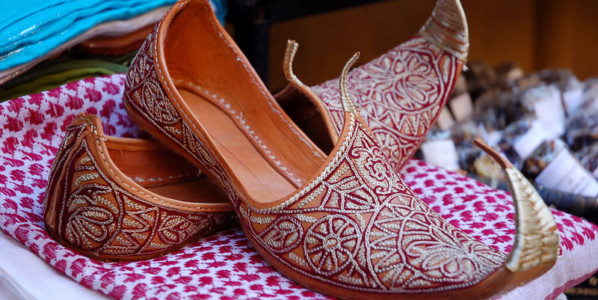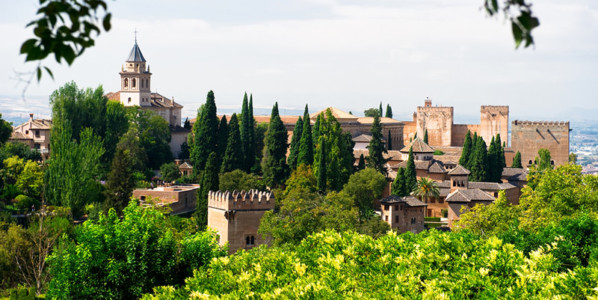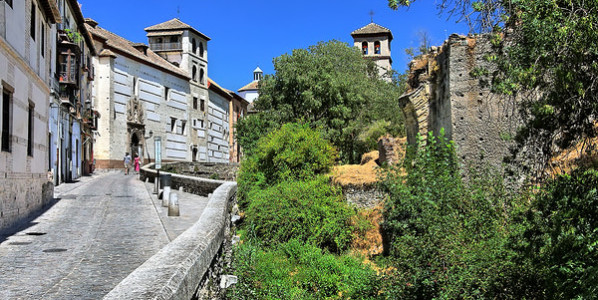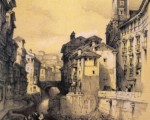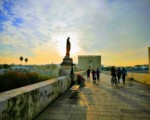“Granada has stolen my heart, I feel as though wounded, or in convalescence…”
These were the words of Juan Ramón Jiménez in a heartfelt, poetic letter he was to write to Isabel García Lorca in September 1924 returning from his visit to Granada. This letter, along with his book, Olvidos , show how he was able to take in, understand and retell the essence of Granada.
He noticed how in Granada (as is the case in Andalusia as a whole), thousands of years of history come together, and how culture and beauty combine in the city’s stones, waters and skies. He also understood the difference between the Andalusia represented by Granada and the different one to be found in the west; perhaps Granada is less cheery and open, but it is more intimate, austere, mysterious and magical. He was not the only person to understand and feel fascination for Granada. He was preceded and followed by others like the great thinker Ángel Ganivet, or the poet Federico García Lorca, and a host of romantic writers, artists and adventurers who came to Granada in search of some kind of enlightenment – which many of them found.
History
The first settlements on Granada soil date back some 2,700 years. These did not constitute a city, however.
The first city was called Elvira (lasting from 60 BC to the 10th century AD) and it was, successively, in Roman, Visigoth and Muslim hands. It was located some kilometres further to the west, in the foothills of the Sierra Elvira Mountains.
Granada, as we know it today, is some 1,000 years old and it was first established on the Albayzín hill, opposite the Garnatha al Yehud Jewish neighbourhood (on the Alhambra hill). The Zirids founded and organised the city in 1010. It was the Nasrids, however, under their first leader Al-Ahmar “el Rojo” (the Red), who would turn it (from 1238 to 1492) into the last and most wonderful bastion of al Andalus (Muslim Spain), building the Alhambra and giving a home to a dream of art, science and peaceful co-existence.
This Nasrid kingdom spread across all eastern Andalusia, resisting Castilian pressure for over 250 years. This culture would hang on for almost 100 years more, but it was counter-productive to the political needs and religious inflexibility of an all-powerful Philip II, and ended with the rebellion and subsequent expulsion of the Moriscos (forced converts) from Granada (1568-1571). In contrast, then, with the all-embracing intensity of its eastern culture, Granada underwent the greatest depopulation, for reasons of race and creed, seen in all Andalusia.
This land and city, however, already had eastern magic and sensuality in its blood, or in its water, and far from disappearing, it would always conquer the city’s conquerors, filling them with fantasy, and continues, to this day, to resist the pressure of modern materialism. In the 16th and 17th centuries, Granada maintained the prestige of its famous literary and artistic schools, which, along with the university founded by Charles V, make Granada one of Spain’s most important cultural centres.
This leads us to a troubled 19th century: first there was the Napoleonic invasion with its violence and pillage, and the subsequent rebellions against it, and the establishment of the Grand Orient of Masonry at the head of those upheavals; then there was a new absolutist reaction in 1823 which was to have violent repercussions in Granada, with episodes as violent as the execution of Mariana Pineda; in 1835.
Granada rose against central government, seconding the Malaga peasants’ revolt, and, in 1836, the city would rise again to proclaim the 1812 constitution. In 1868, Granada sided against Isabella II and, when the Republic was proclaimed in 1873, the city’s dominant federalists constituted the Granada canton, which would be dissolved by General Pavía after only forty-six days of existence. The 1884 earthquakes and the cholera epidemic of 1885 are painful dates in Granada’s history.
On the positive side was a brilliant literary movement formed around a group of writers that made up the famous Cuerda granadina. They were backed up by the activities of the El Liceo literary society and, later, by the Centro Artístico which reached its pinnacle around 1888. Thus Granada’s literary tradition was maintained.
Its last exponent, up until our century, was the Cofradía del Avellano, represented by Ángel Ganivet, not forgetting the universal poet Federico García Lorca, whose work continues to generate literary studies and emotions around its metaphors to this day.
A privileged city
Granada’s historical background goes hand in hand with a lively programme of cultural and leisure activities.
Apart from the main monuments which cannot be missed (Alhambra, Ceneralife, Cathedral, Cartuja Monastery), there are endless historic sites to visit ( cármens, palaces, museums, convents.)
There are also art and science exhibitions in emblematic buildings (Rodríguez Acosta Foundation, Guerrero Centre, Science Park, Manuel de Falla Auditorium…). Furthermore, every season has its own major cultural encounter, like Easter week, international Music and Dance festivals, the theatre, tango and jazz festivals, etc, while in the city’s different neighbourhoods, old and new, local residents come together with the lively youth and student population to fill endless taverns, bars and wine cellars. which have turned tapas into one of Granada’s most characteristic symbols.
The city has a privileged location, near to both the sea and the Sierra Nevada Mountains (with the Iberian peninsula’s highest peaks and Europe’s sunniest ski resort). It is surrounded by stunning natural landscapes (Sierra Nevada National Park and the Sierra de Huétor and Almijara Nature Reserves) and is well connected by road – in one hour you can get to numerous different regions (like the Alpujarra, Altiplano, Poniente or Tropical Coast).
All these make Granada the ideal place for travellers to get out and satisfy their curiosity or, comfortably lodged at a charming hotel, to find peace and bring their dreams to life.

